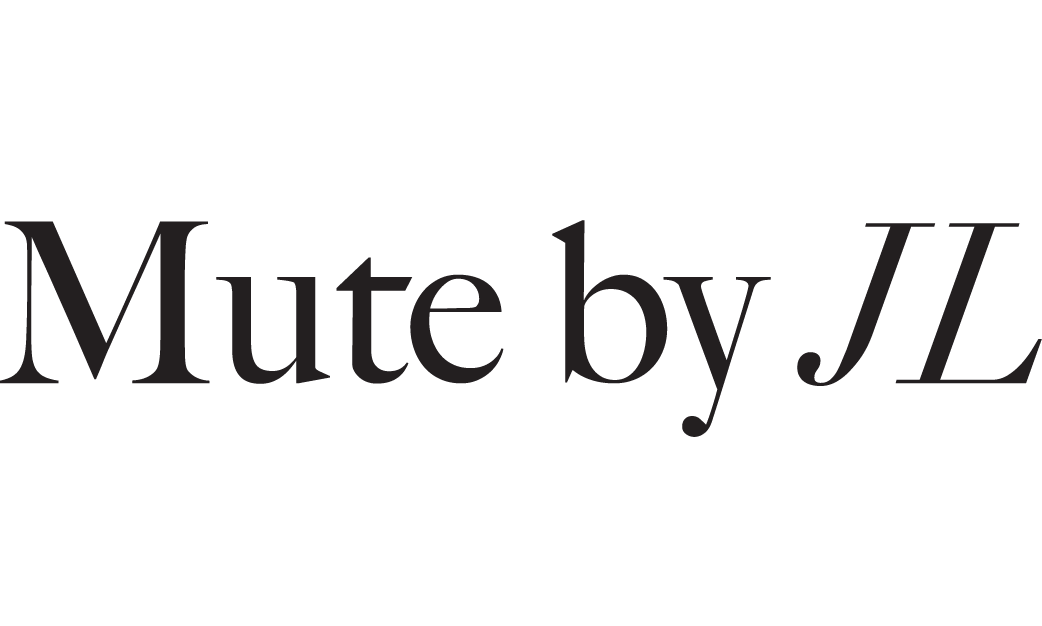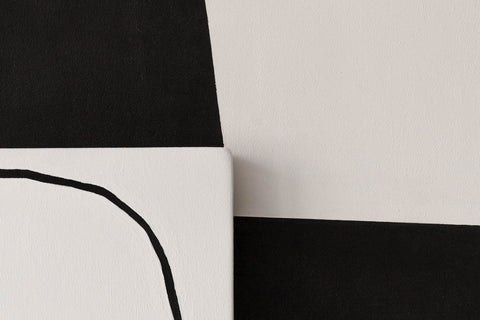WALL’S PAINTINGS BALANCE MINIMAL SHAPES AND LINES WITH SWATHS OF SATURATED COLOUR. HIS PALETTE – PRIMARY BLUES, REDS AND YELLOWS, AND A PARTICULAR SHADE OF NEARLY-NUDE PINK – HAS EVOLVED FROM HIS BACKGROUND IN TECHNICAL ILLUSTRATION, THE CONFINES OF WHICH HE SOUGHT TO ESCAPE BY PAINTING, AND HIS “SIMPLE” CHILDHOOD ON ENGLAND’S NORFOLK COAST.


Have to warn you, I’m terrible at explaining myself,” says Michael Wall as he settles into a cushy sofa with a coffee in a Central London cafe. “I’ll just go off on tangents, so you’ll have to reign me in.”
He does, occasionally, go on tangents, but, for an artist wary of defining his process too thoroughly, these are often the most illuminating. And, despite his protestations that he’s “rubbish with words”, Wall, a newcomer to London’s art scene whose bold hued, abstract paintings have cemented his status as one to watch, speaks with an articulateness and candour about his work, and why he thinks it resonates.

“The whole point of the work is how other people interact with it,” he says, suggesting it’s similar to a song which may have wildly different meanings to each listener, depending on their circumstances.
“People see completely different things [in my paintings] to what I see, but that’s the beauty of it. I don’t like being at the forefront of the work. The more people know about me, the more I get imposed on the work.”
Wall’s paintings balance minimal shapes and lines with swaths of saturated colour. His palette – primary blues, reds and yellows, and a particular shade of nearly-nude pink – has evolved from his background in technical illustration, the confines of which he sought to escape by painting, and his “simple” childhood on England’s Norfolk coast. As a kid, he was always drawing, but in an entirely different way to how he paints now.

“My dad was an engineer and one of the best figurative drawers I know, so he used to draw stuff and I would colour it in,” he says.
“I grew up drawing photographically and you’re always trying to show how good you are at art by how close to reality you can get. It used to be my thing when I was growing up – in school, I’d show off how good I was at drawing.”
This led to a career as an illustrator, which was brief-based and meant Wall was forever contextualising his work. When he took six months out to simply make art for himself, he initially found it a struggle.
“It was hard to make work without a brief, and I was very confused about what to do,” he says.


“Eventually I started off with the painting, with work that was just a complete expression of me, and it’s evolved into these works that are really for the viewer, for other people. Nothing in my work has been forced. I guess I went as far away from technical illustration as possible.”
His shapes – simple but masterfully balanced with one another – also come naturally to him, and though he’s not one to plumb his work for hidden meanings, he cites objects he encounters in his daily life as potential inspiration.

“It’s not a figurative thing, I haven’t been inspired by something directly, but sometimes I might see something in my day to day life, something that sits a certain way. It’s nothing in the scheme of things, but it might have an effect on me visually,” he says.
“For a while, I got so interested in why we look at things a certain way and how society interacts with them. But the work isn’t meant to be deep, it’s meant to be approachable. I want it to be simple and for people to not be intimidated by it. The shapes come from that idea.”


He dislikes pretentiousness in art, and seems touched when I suggest that his are pieces I could imagine buying purely for the impact they make on a space, and for joy they bring to the viewer.
“In the art world, decorative is a dirty word,” he says.
“I don’t take offense to it though. Maybe coming from illustration, I wasn’t ashamed of wanting to make simple work that’s really visual. I think people miss a point in art when they put a price on something looking good, assuming it’s no good because it’s visually striking.”
He pauses for a sip of coffee.
“Art is not less important because you feel you could just hang it somewhere and enjoy it.”

- WORDS: Lucy Brook
- PHOTOS: Ash James
- ORIGINAL POST: Readcereal

